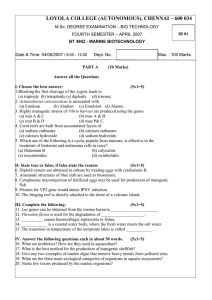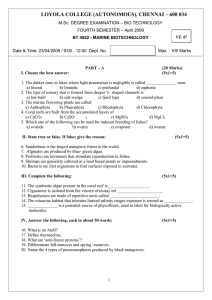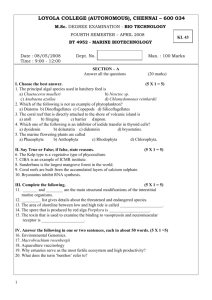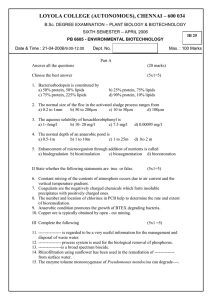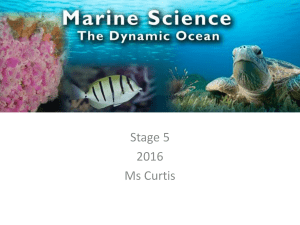LOYOLA COLLEGE (AUTONOMOUS), CHENNAI – 600 034
advertisement
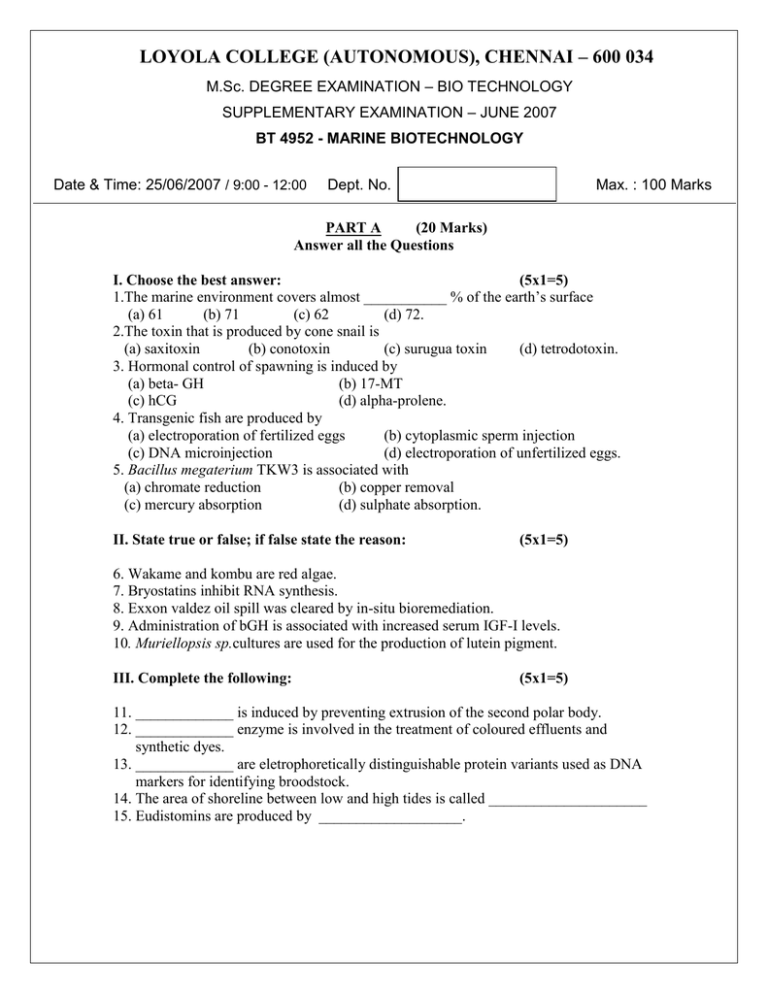
LOYOLA COLLEGE (AUTONOMOUS), CHENNAI – 600 034 M.Sc. DEGREE EXAMINATION – BIO TECHNOLOGY SUPPLEMENTARY EXAMINATION – JUNE 2007 BT 4952 - MARINE BIOTECHNOLOGY Date & Time: 25/06/2007 / 9:00 - 12:00 Dept. No. Max. : 100 Marks PART A (20 Marks) Answer all the Questions I. Choose the best answer: (5x1=5) 1.The marine environment covers almost ___________ % of the earth’s surface (a) 61 (b) 71 (c) 62 (d) 72. 2.The toxin that is produced by cone snail is (a) saxitoxin (b) conotoxin (c) surugua toxin (d) tetrodotoxin. 3. Hormonal control of spawning is induced by (a) beta- GH (b) 17-MT (c) hCG (d) alpha-prolene. 4. Transgenic fish are produced by (a) electroporation of fertilized eggs (b) cytoplasmic sperm injection (c) DNA microinjection (d) electroporation of unfertilized eggs. 5. Bacillus megaterium TKW3 is associated with (a) chromate reduction (b) copper removal (c) mercury absorption (d) sulphate absorption. II. State true or false; if false state the reason: (5x1=5) 6. Wakame and kombu are red algae. 7. Bryostatins inhibit RNA synthesis. 8. Exxon valdez oil spill was cleared by in-situ bioremediation. 9. Administration of bGH is associated with increased serum IGF-I levels. 10. Muriellopsis sp.cultures are used for the production of lutein pigment. III. Complete the following: (5x1=5) 11. _____________ is induced by preventing extrusion of the second polar body. 12. _____________ enzyme is involved in the treatment of coloured effluents and synthetic dyes. 13. _____________ are eletrophoretically distinguishable protein variants used as DNA markers for identifying broodstock. 14. The area of shoreline between low and high tides is called _____________________ 15. Eudistomins are produced by ___________________. IV. Answer the following questions each in about 50 words. (5x1=5) 16. Give names of any two microbes involved in the removal of oil spill. 17. What method is suitable for the production of transgenic molluscs? 18. Mention two applications of hybridoma technology in aquaculture. 19. Name the pigments producd by microalgae. 20. What does the term ‘benthos’ refer to? PART B V. Answer any five of the following questions each in about 350 words:(5x8=40) 21. Briefly discuss the coral reef ecosystem. 22. Explain the zonations of fresh water systems. 23. Write brief notes on (i) estuaries (ii) mangrove forests. 24. Give an account on marine toxins. 25. Write a note on gynogenesis and androgenesis. 26. Describe the use of genetic markers for the identification broodstock. 27.Write note on (a) marine enzymes used in bioremediation. (b) Any two applications of hybridoma technology in aquaculture. 28. Give an account on recombinant vaccines used in aquaculture. PART C VI. Answer the following questions each in about 1500 words: (2x20=40) 29. (a) Discuss how molecular diagnostics is used in aquaculture, giving suitable examples. (or) (b) Give an account of genetically engineered marine algae, bacteria and protozoans. 30. (a) Give a brief account on biofouling and its cycle. (or) (b) Give an account on algal products produced in marine ecosystem. **************
